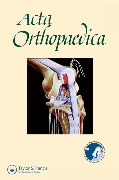
TKA: No effect of fibrin sealant on reducing blood loss and functional recovery .
No effect of fibrin sealant on drain output or functional recovery following simultaneous bilateral total knee arthroplasty
Acta Orthop. 2013 Apr;84(2):153-8. doi: 10.3109/17453674.2013.769082. Epub 2013 Jan 2524 patients (48 knees) undergoing simultaneous bilateral total knee arthroplasty (TKA) had their knees 1:1 randomized to receive an intraoperative application of either fibrin sealant or saline. The purpose was to determine the adjuvant effect of fibrin sealant on postoperative blood loss in patients already treated with preoperative tranexamic acid and tourniquet use. Blood loss was calculated 24 hours following surgery, and patients were assessed for functional recovery up to 21 days postoperatively. The findings indicated that there was no decrease in blood loss in knees treated with fibrin sealant, and that pain, swelling, range of motion, and isokinetic strength was similar between knees, regardless of the application of fibrin sealant or saline.
Unlock the Full ACE Report
You have access to 4 more FREE articles this month.
Click below to unlock and view this ACE Reports
Unlock Now
Critical appraisals of the latest, high-impact randomized controlled trials and systematic reviews in orthopaedics
Access to OrthoEvidence podcast content, including collaborations with the Journal of Bone and Joint Surgery, interviews with internationally recognized surgeons, and roundtable discussions on orthopaedic news and topics
Subscription to The Pulse, a twice-weekly evidence-based newsletter designed to help you make better clinical decisions
Exclusive access to original content articles, including in-house systematic reviews, and articles on health research methods and hot orthopaedic topics
































































